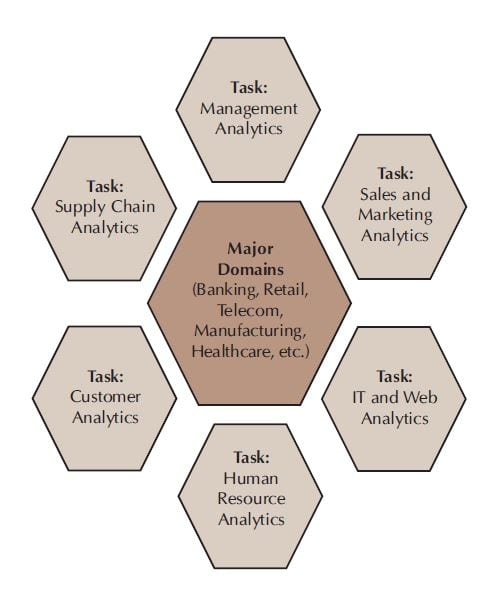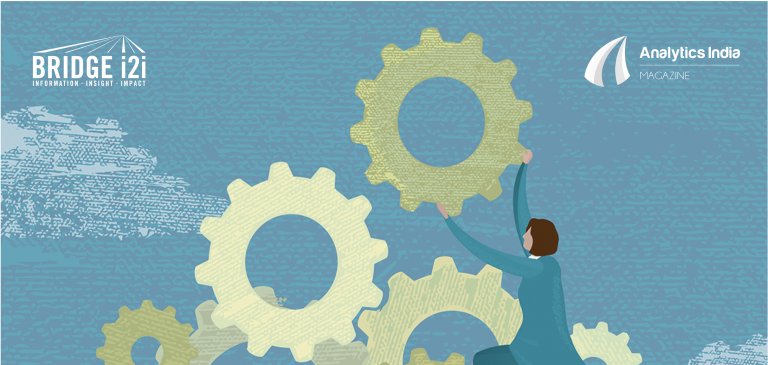 It is important to highlight the significant strides that the analytics industry has made in recent times. Although it has been active in advanced countries as a support process embedded within more mainstream business functions,
It is important to highlight the significant strides that the analytics industry has made in recent times. Although it has been active in advanced countries as a support process embedded within more mainstream business functions,
Analytics as a standalone business process has gained pre-eminence in the past 15 years, more so in countries such as India with the advent of offshoring of information technology-oriented work to cheaper production sites around the world. Hence, India has witnessed the emergence of service units that have assimilated certain specialized tasks that were hitherto part of a large policy making unit in workplaces in the developed markets. Over time, these tasks and processes were farmed out to cheaper labour markets such as India, and consequently, the genesis of standalone analytics processes.
In the recent past, the industry has grown significantly – by almost 14 percent in 2012 – and is slated to grow to a size of $50.7 billion by 2016 (IDC Report, 2011). It is being forecasted that the market for analytics and business intelligence (BI) platforms will be the fastest growing segment in the software markets (Gartner Report, 2012). With emerging trends such as data-as-a-service coming, analytics shall probably see further growth prospects.
A reason for analytics gaining ground is the advent of technology that can compile data in a form that is amenable to analysis leading to decision-making. In addition to the internal business data and well-structured corporate or customer data, organizations can potentially acquire large external data sources (on social networks, internet, e-mails, text documents, etc.), which are usually unstructured, and need to be combined with structured data to conduct meaningful analysis. Managing the sheer volume, variety, and velocity of data that is being generated (with the innumerable technological interface devices) is a relatively new challenge for the typical business organization. As an illustration of the sheer magnitude of data, it is reported that for the year 2012, 2.5 quintillion bytes of data were generated every day4.
In India, the Analytics and BI industry together is sized around `10 billion and is expected to grow by 22.4 percent to `26.9 billion by 2017. The major chunk of the analytics usage comprises of the BFSI (Banking, Financial Service and Insurance), Telecom Services, ITES (Information Technology Enabled Services ), FMCG (Fast Moving Consumer Goods), and Retail. However, the small and medium enterprise sector is still in a nascent stage of deploying analytics and BI as compared to their larger counterparts, the latter contributing up to 65 percent of the total services utilized in the Analytics and BI market (Netscribes’ Report, 2013).
Additionally, the Indian Analytics Industry holds the advantageous position of having one of the biggest shares in the global outsourcing market (total KPO market). With margins as high as 25-30 per cent in analytics off-shoring,
Indian analytics service providers delivered $375 million in the total global data analytics outsourcing market of $500 million in 2012. It is also projected that by 2015, the data analytics off-shoring by global companies to India will increase to 21 percent in the total KPO market opportunities of $5.6 billion. Hence, India is expected to maintain its edge over major offshore destinations such as China, the Philippines, Eastern Europe, and Latin America (Avendus Capital Sector Overview, 2012).
Analytics is usually a dominant process in industries/ domains that are highly data-rich and the major importance of its usage is attached to the reduction of business risks, improvements in revenue accrual, and generally in increasing overall operating efficiencies. As per available records, data and analytics functions are most popularly used in areas of sales and marketing, followed by customer service and R&D, and peripherally by IT and manufacturing.
Surprisingly, a few functions like HR are yet to gain grounds on using data extensively for decision-making (TCS Global Trend Study, 2013).
Typically, the role of analytics across functions in major domains (like banking, retail, etc.) broadly encompasses the following tasks:
Some examples of widespread application of Analytics in industry as available from information in the public domain are described below:
a) Retail giants use terabytes of data by way of advanced analytics and seamlessly manoeuvre their daily and strategic operations of managing customers (loyalty and churn), changing existing offerings, introducing new ones real time, etc.
b) Analytically-abled banks use analytics to segment customers on the basis of risk profiles, credit usage, etc., and offer products that are customized for them.
c) Credit firms deploy sophisticated analytics to protect millions of accounts from frauds.
d) Big e-commerce players handle and manage millions of operational data every day and interact with numerous sellers quite efficiently using analytics. They manage supply chains as they are able to analyse data to get insights on efficiencies of suppliers, control material expenditures, assess accuracy of sales, and evaluate order delivery plans. Also, they can actually predict the demand of a particular product and its supply which can then be merged with the help of analytics to calculate optimum pricing that can be done real time (most web vendors practice this) to reduce losses.
e) A variety of service industries (airline industries, hospitality industries, car rental companies, amusement parks, etc.) offering perishable items maximize their revenues integrating demand-side management (like segmentation, pricing, availability) with the supply side management (like capacity allocation and inventory control) in competitive market environments by building relevant models and using optimization techniques.
f) Relatively new analytics applications in HR allow enterprises to identify workforce trends, or to work out a cost or revenue model that suits their ‘hourly pay workforce’ models, e.g., contact centres or systems integrators minimizing the number of employees to be billed.
g) Similar applications are reported in the domain of traditional manufacturing and supply chain where market requirements data has influenced decisions based on appropriate analysis to enable optimized inventory planning, inputs sourcing, and scheduling of manufacturing processes. The opportunities to optimize are innumerable, but the limitations of availability of systematically managed data in many traditional sectors have limited the application of analytics to decision-making.
The authors’ own experiences in this domain have confirmed such diverse applications in business. However, deeper and more pervasive use of Analytics and BI tools has been largely driven by the availability of data at a large scale and, more importantly, the richness (variety) of information that is captured. Using these yardsticks, it is seen that the retail banking sector, retailing sector, airlines and telecom services and, to some extent, the FMCG sector have had the largest influence of analytical services (in corroboration with published data discussed earlier). In sectors other than these, the role is somewhat muted largely due to the lack of organized data that can be coupled with decision-making. It must be highlighted that many sectors that have built up analytical prowess are blessed by availability of data due to the automatic generation of the data in the day-to-day operations of these sectors. For instance, retail banking operations are primarily“below-the-line” initiatives (customized for individual customers) and every transaction is tracked and maintained routinely at the level of every individual customer identity. Therefore, it is possible to use this rich customer-specific collation of transaction data for analysis and insight development.
The main advantage of using analytics in business decision- making is the possible avoidance of subjectivity.
While the human brain is capable of processing many dimensions of data at a time, it lacks the consistency that is available in a rational scientific process using a computational aid. Hence, as a subject matter, data analytics has always been a suitable weapon to counter the risks of inconsistencies of non-rational decision-making. The transition from heuristics to fact-based problem-solving has been ably facilitated by the easier availability of business data, both by voluntary and involuntary methods and the development of smarter processing abilities. On the environmental front, the advent of competitive forces has provided adequate impetus for precision, focus, and efficiency in decision-making, which Analytics can enhance.
The true potentiality of Analytics is dependent on various other factors that influence its impact on business operations. The challenge is to ensure compatibility across data depth, processing skills, and congruence with business objectives, which may finally decide the level of utility this discipline provides for corporations that employ this function. An elaboration of this requirement is described in the next section.
Republished on authors consent from Vikalpa


















































































